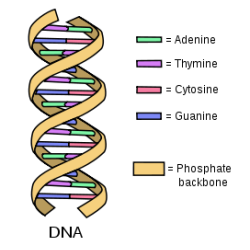Source Institutions
Source Institutions
Add to list Go to activity
Activity link broken? See if it's at the internet archive

In this activity, learners perform an experiment that models a chromatography-like process called electrophoresis, a process used to analyze DNA. Learners examine coffee filter strips, each dotted with mock "DNA" (food coloring dyes diluted with water), as they separate into components when placed in water. This process mirrors restriction mapping techniques used to analyze an animal's genetic makeup. This resource also includes two simple ways of demonstrating gene splicing.
- 10 to 30 minutes
- 10 to 30 minutes
- 1 cent - $1 per student
- Ages 8 - 18
- Activity, Experiment/Lab Activity, Lesson/Lesson Plan, Simulation
- English
Quick Guide
Materials List (per student)
- Mock DNA solutions-two or more food coloring dyes diluted with water
- coffee filters or paper towels
- scissors
- straw
- container for water
- paper clips
Subjects
-
Life Sciences
- Cells
-
Diversity of Life
- Animals
-
Heredity and Genetics
- Patterns of Heredity
- DNA Structure and Function
-
Physical Sciences
- Chemistry
-
The Nature of Science
-
The Scientific Process
- Conducting Investigations
- Gathering Data
- Formulating Explanations
- Communicating Results
-
The Scientific Process
Informal Categories
- Animals
Audience
To use this activity, learners need to:
- see
- see color
- touch
Learning styles supported:
- Involves hands-on or lab activities
Other
This resource is part of:
Access Rights:
- Free access
By:
- Scientific American Frontiers Online
Rights:
- All rights reserved, Access Excellence @ the National Health Museum, 2009
